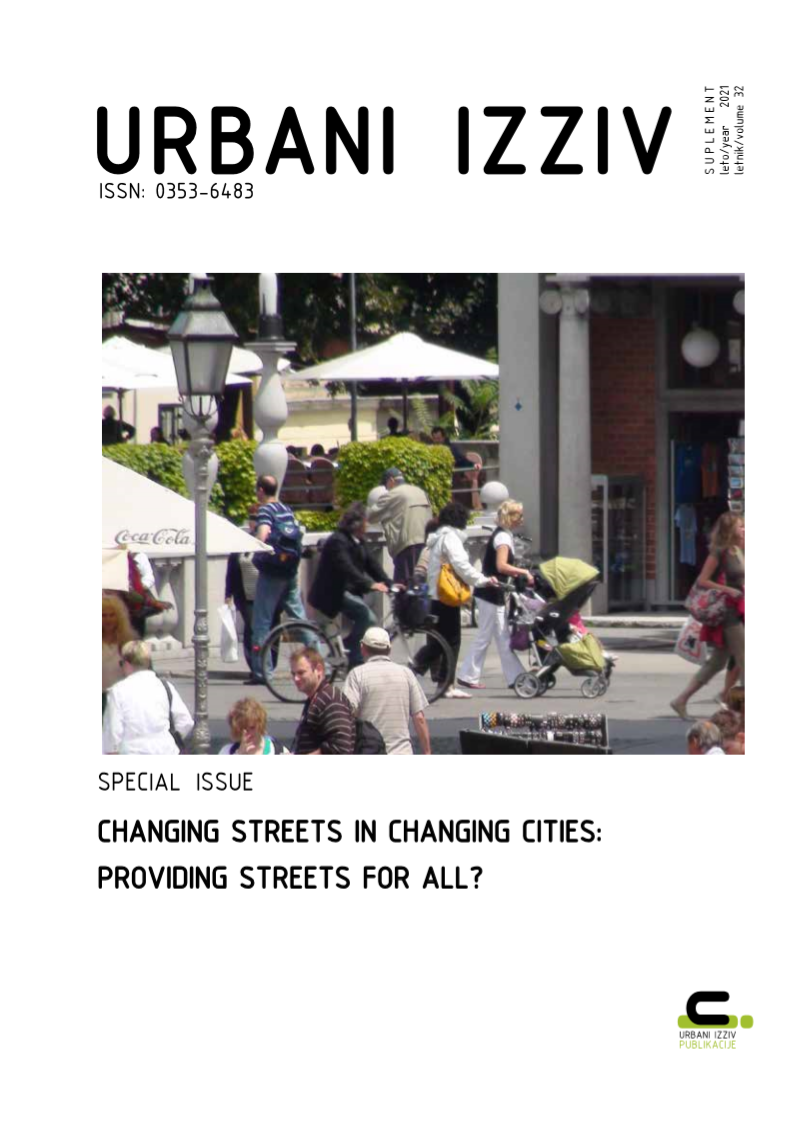 Kazalo
Kazalo
Slike

Slika 1: Figure 1: Neighbourhood edge where different paths start or connect the neighbourhood with other places and districts nearby – illustrations depict key walkability themes, principles, items, or interventions on a continuous path.

Slika 2: Figure 2: Green and lively riverbank in the neighbourhood with leisure and sports activities (illustration: authors).

Slika 3: Figure 3: Central pedestrian and cycling path with various activities and interventions (illustration: authors).

Slika 4: Figure 4: Semi private courtyards crisscrossed with and integrated into the network of public paths (illustration: authors).

Slika 5: Figure 5: Central space of the neighbourhood with its multipurpose and mixed use open square (illustration: authors).

Slika 6: Figure 6: Common streets in residential neighbourhood with walkability principles applied (illustration: authors).

Slika 7: Figure 7: Public square with a distinctive design – open space as a landmark (illustration: authors).

Slika 8: Figure 8: Linking modified key themes of walkability into an existing scheme (initially proposed by Forsyth, 2015; and modified by the authors).

Slika 9: Figure 9: Educational facilities in the neighbourhood and their immediate surroundings
Urbani izziv Leto 32, št. supplement, december 2021
: 57-76
(Članki)
doi: 10.5379/urbani-izziv-en-2021-32-supplement-4
Avtor
Kaja Žnidaršič
kaja.znidarsic@gmail.com
Matevž Juvančič
University of Ljubljana, Faculty of Architecture
matevz.juvancic@fa.uni-lj.si
Naslov članka
Walkability in residential neighbourhoods: Themes and principles revisited
Povzetek
The article sets to examine broader theoretical scope of walkability, and research efforts dealing with measurement of walkable environments, with a specific aim to distil and translate walkability as a measure to walkability as a design principles toolbox of interventions and items. Overarching walkability themes are in due course branched out into more operational walkability principles and broken into further constituents of implementable interventions and items, derived from research and theoretical contributions of numerous authors. The focus lies on newly designed residential neighbourhoods, which we also demonstrate and extensively illustrate on an example of a proposed neighbourhood. Emphasis is placed on an integrative approach, where the holistic aspects of walkability – dealing with all of them at once – and its multidimensionality – intertwinement and co-dependency – are integral parts and built into the design, implementation, and use.
Ključne besede
walkability principles, key walkability themes, urban design, urban planning, residential neighbourhood, interventions, walkable urban environments